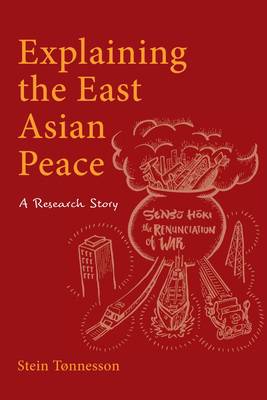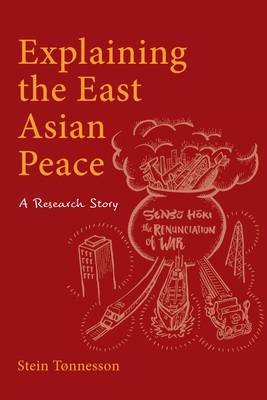
- Afhalen na 1 uur in een winkel met voorraad
- Gratis thuislevering in België vanaf € 30
- Ruim aanbod met 7 miljoen producten
- Afhalen na 1 uur in een winkel met voorraad
- Gratis thuislevering in België vanaf € 30
- Ruim aanbod met 7 miljoen producten
Zoeken
€ 88,95
+ 177 punten
Uitvoering
Omschrijving
The fascinating and controversial (but also personal) story of a 6-year research program based at Uppsala University that, instead of explaining conflict, has sought to explain peace, and to gauge its quality and sustainability. Specifically, the program has sought to understand the dramatic drop in battle deaths in East Asia (including Southeast Asia) from the 1980s, just as warfare worsened in the rest of the world. The book recounts heated discussions to explain this 'East Asian Peace'. Was it due to a changing power balance? The ASEAN Way? China's 'peaceful development' doctrine? Growing economic interdependence? Or, as the author contends, a series of national priority shifts by powerful Asian leaders who prioritized economic growth and thus needed external and internal stability? The book also deals with civil as well as international conflict, and discusses why Thailand, Myanmar and the Philippines have not yet achieved internal peace. The author recounts his debates with colleagues who find it difficult to accept that a region with unresolved disputes, rising arms expenditure, massive human rights violations, and high domestic violence can be called 'peaceful'. East Asia, they say, has just a 'negative peace' or relative absence of war. Though he holds that a 'negative peace' has tremendous positive value, Tønnesson does ponder its future. For instance, can China keep peace with its neighbors? A rare combination of detached analysis and personal narrative, the book examines developments in the world's most important region while also telling the story of how researchers with different assumptions develop rival theories and predictions. A companion volume to the main output of the Uppsala peace research program, Debating the East Asian Peace, this study will be of especial interest to not only scholars and students but also policy-makers, NGOs, businesses, journalists and many others engaged with the peace, stability and prosperity of the East Asian region.
Specificaties
Betrokkenen
- Auteur(s):
- Uitgeverij:
Inhoud
- Aantal bladzijden:
- 256
- Taal:
- Engels
- Reeks:
Eigenschappen
- Productcode (EAN):
- 9788776942229
- Verschijningsdatum:
- 31/05/2017
- Uitvoering:
- Hardcover
- Formaat:
- Genaaid
- Afmetingen:
- 152 mm x 229 mm
- Gewicht:
- 544 g

Alleen bij Standaard Boekhandel
+ 177 punten op je klantenkaart van Standaard Boekhandel
Beoordelingen
We publiceren alleen reviews die voldoen aan de voorwaarden voor reviews. Bekijk onze voorwaarden voor reviews.








